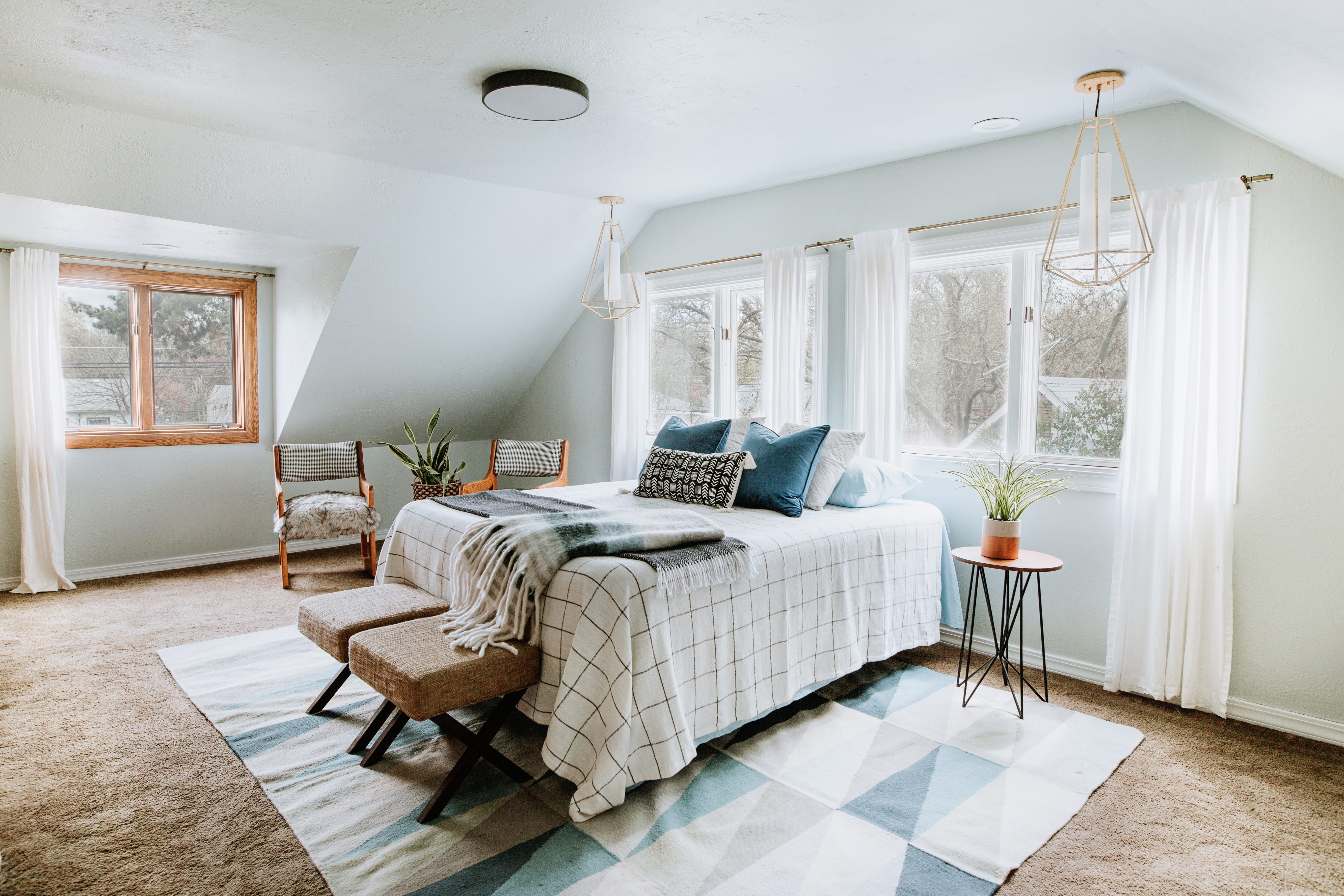The direct-to-consumer business model is quickly overtaking brick and mortar industries. Today, you can order a new smile online, own ambitious beauty gadgets and — perhaps the most notable shift in consumer trends — get your mattress sent straight to your door.
According to MarketWatch, the worldwide market for mattresses is expected to grow roughly six percent over the next five years and will reach $406 million in the U.S. in 2024. And it only continues to grow, but now, it grows online. Since Casper launched its “mattress in a box” in 2014, the market is growing so much that industry insiders estimate there are as many as 100 brands — including Avocado, Layla, Bear Mattress, Tuft and Needle, Purple and more — selling mattresses online.
https://www.instagram.com/p/BstbJD5Aaz4/
Most of them offer patented materials or innovative designs that promise you will not find another mattress like theirs. According to analyst and reporter Justin K. Brady, another key reason online mattress companies are booming is because of the development of new technology: roll pack machines like Teknomac Automatic Roll Pack System, which allows these companies to ship mattresses with minimal freight costs.
But how do you pick the best? Even if shopping online, it all comes down to quality and knowing what you are looking for — with better sleep always at the forefront of your mind.
“Sleep is a performance activity,” says Michael J. Breus, known to millions as The Sleep Doctor — he is regularly featured on The Today Show, The Dr. Oz Show, Rachel Ray and more. “You can run a race in flip flops and cutoffs and torn t-shirt, but your time is not going to be too good. But if you got your sneakers on, your dry-fit gear, you’re going to perform better. Sleep is the same way.”
Pick The Right Material
Some of picking the right one come down to preference, but a lot of it comes down to considering temperature control and your size and weight.
Spring: Spring mattresses are the traditional mattresses with inner coils that provide support. “For people who weigh more than 250 pounds, I lean towards a spring bed with maybe some foam on top that can be comfortable for them … you get a lot more support that way,” says Breus.
Memory Foam: Memory foam molds to the shape of the body and helps reduce motion and movement during sleep. When weight varies, support characteristics also vary, so a memory foam bed, in general, is excellent at restricting movement, as it lacks bounce — if you suffer from back pain, then memory foam might be the right pick because it stabilizes you. (But you could also be a person who has back pain and memory foam would be too soft.) There is also different firmness within memory foam that you can consider, including latex, which is a variation of this foam that is a bit bouncier and firmer than regular memory foam. Keep in mind that memory foam tends to retain more heat, so if that is a concern depending on weight characteristics or climate, opt for another material.
Air: Air mattresses can be adjusted for support and firmness. If you share the bed with a partner where there is more than 100-150 pounds difference between the two, air might be a good choice, since it can give you different support by simply inflating and deflating. “There’s a new technology called REST Smartbed Technology. It has 400 sensors across the bed, and that works automatically [to adjust itself],” says Breus. “If you want to talk about a smart tech bed, that’s the one.”
Water: A water mattress provides contour to the body, offers good temperature control and lends itself to good firmness control. But the main setback is that it requires more maintenance than the other types of mattresses, which includes occasionally burping the air out of it and adding water conditioners to stave off bacteria and algae that can appear in stagnant water, and of course, draining it if you have to move it.
If you are still unsure, Breus weighs in: “My personal favorite is to go with a hybrid, where you have spring for the support layer and then you have different types of foam for the comfort layer,” he says. “Think of the mattress like a sandwich, if you go from the bottom up, the first 8-10 inches is your support, and the next 2-6 inches is your comfort.”
Test it Well
No matter if you are ordering online or picking up from the store, testing is imperative. Breus says there are three points to consider: you want a mattress that supports your body without sinking at the hips; gives relief and comfort at pressures points like the knees, hips, shoulders and head; and lets your muscles relax, specifically your back. If your bed is too hard or too soft, you will not be evenly distributing your weight to support these pressure points, and you will hold your body in tension, which prevents sound rest.
All these require that when you are shopping for a mattress, you spend a considerable amount of time with each — and plan to at least spend an hour at the store. This means that going over to it and pushing on it, sitting down on it, or putting your knee on it to assess it does not count. “You have to lie down on the bed for 5-7 minutes,” says Breus. “When you’re standing up, gravity is a force against your pumping blood, but when you’re lying down, your body basically has to recalibrate, and it takes that amount of time to do so.” Find a position, get in it for five minutes, rotate to another position for five minutes and then rate the bed from 1-10.
Your goal should be to recreate as much of your actual sleep experience as possible — if you are ordering online this will be easy. Most online retailers offer long, risk-free trials and free returns. But if you are going to visit a store, this includes testing the mattresses near the end of the day when you are tired, wearing loose-fitting clothes and bringing your own pillow. If you have a sleep partner, bring them too and do not share your ratings with each other until the end.
“Here’s a trick I teach people: when you go to the store, have someone take a piece of masking tape and run it straight down the middle of your back across your spine, then when you’re lying there, somebody could look at you and see almost instantly if your spine is curving or not.” The right mattress will help your sleeping posture, and help you maintain a healthy back by keeping your head, shoulders and hips aligned.
Know What To Spend
There is a lot that goes into the price of a new mattress, and Breus fully believes that you get what you pay for. A high-quality mattress will typically cost somewhere between $1,500-$3,000. While steep, a bed should probably last you anywhere from seven to 10 years, and if you spend $3,000, in 10 years you will have spent around $1 a night.
When pricing a mattress, Breus says it starts with the retailer, which likely marks it up 50 percent to sell it to you. About another 10 percent of that price is wholesale mark up, half of what is left is labor costs and another half is materials. So, if you are looking at a $1,000 bed, that is around $250 of materials that went into making it. “I would argue that anything below $1,000 is likely not very good,” he adds.
That being said, mattresses purchased online can range from $500-$1,000 — this is likely due to less markup. Breus says you should do the same math on retailer margin, labor and materials.
Know When It Is Time To Replace
Regardless of where it was purchased, most mattresses will last you seven to 10 years, but your body is the telltale sign that it is time to replace. “If you’re waking up more than two days a week being stiff and sore, that’s your body telling you. Your body will wear out quicker than your mattress will,” he says. Other things to consider: how your body changes over time, like gaining or losing weight, levels of fitness, pregnancies and conditions like back pain or neck pain. The bottom line: If your mattress just is not providing the same level of support and comfort, it is time for a change.
We only recommend products we have independently researched, tested, and loved. If you purchase a product found through our links, Sunday Edit may earn an affiliate commission.







